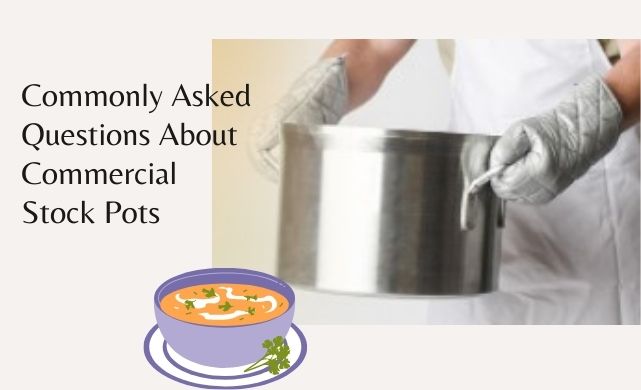The stock pot is an indispensable piece of commercial cookware in the foodservice kitchen. Stock pots are generally quite large, with handles for easy transport and often have a lid. They are utilized, like the name says, for stocks, stews and soups as well as boiling pasta, steaming vegetables and seafoods. Their versatility is what makes these so vital to the commercial kitchen. Here are some commonly asked questions about stock pots that will help you understand the differences in one pot from another.
What material is best for stock pots?
You will often see stock pots in aluminum or stainless steel and some will be a tri-ply material, which is a combination. The type of material that is best for a stock pot depends on what the pot will be used for in the kitchen. Stainless steel is highly durable and long lasting. It is also easy to clean, dent and scratch resistant and unlikely to warp. Stainless also has a low reactivity which means that it prevents the transfer of flavors and it can be used with acidic foods like tomato sauce without any pitting or staining. Stainless steel stock pots can also get heavy as the material is heavy. Aluminum stock pots are much lighter in weight than stainless steel stock pots, which is important when you get into the larger sizes. Aluminum stock pots heat quickly and transfer heat evenly . They’re designed to sit for long periods of time on the range. They can be used for boiling water, braising meats and are great to simmer and reduce a stock. Aluminum is not a good material to use with acidic foods, however, as these will discolor the appearance and may cause pitting on the surface. Tri-ply stock pots consist of an aluminum core between stainless steel which causes these pots to heat quickly and retain the heat plus remain durable.
Which are better, riveted or welded handles?
Most stock pots feature two handles, one on each side of the pot, so that they are easy to carry, even when filled. When shopping for stock pots, you’ll see handles that are riveted, where there is a metal fastener that attaches the handle to the pot or welded where the handles are attached by melting the material of the handle into the material of the pot. The difference between these handle types is cleanability. Welded handles do not have any spaces to allow for any buildup to occur, where with a riveted handle, material may get trapped in the rivets that is difficult to remove.
What sizes do stock pots come in?
A stock pot is typically the largest piece of cookware in a kitchen. You will find stock pots as small as 3-1/3 quarts and some as large as 160 quarts. Institutions like hospitals, schools and colleges often utilize stock pots to cook large batches of soups, stews, chili’s and other foods. Most commercial foodservice outlets like restaurants or cafes utilize mid-sized stock pots.
Cook’s carries a large variety of stock pots from several top manufactures including Vollrath stock pots, Winco stock pots and Carlisle stock pots.
